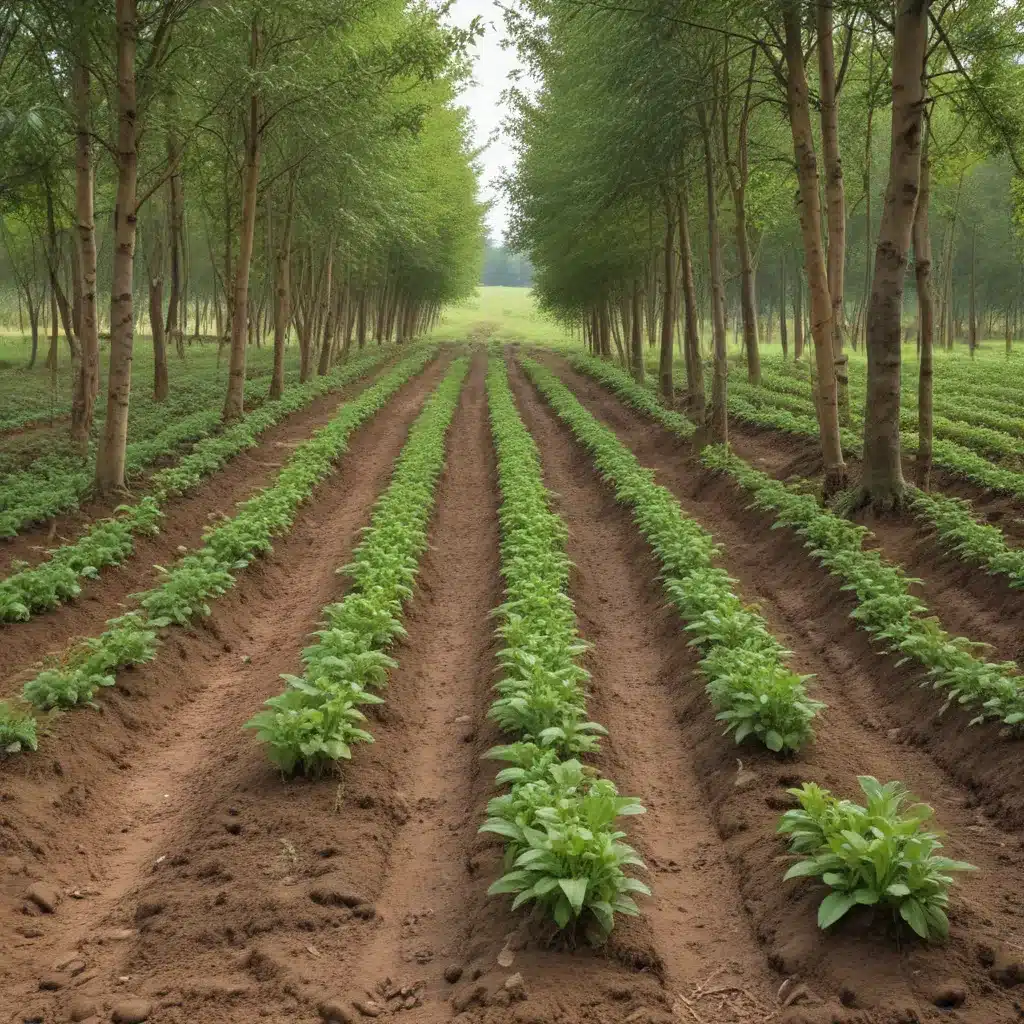
Sustainable forestry practices and agroforestry systems play a vital role in maintaining soil fertility and ecosystem health. In our 20 years of forestry operations and woodland management… By strategically integrating trees, crops, and other vegetation, we can harness the power of biodiversity to enhance nutrient cycling, improve soil structure, and boost overall land productivity. One effective approach is the use of agroforestry intercropping techniques, which leverage the synergistic interactions between different plant species to enrich the soil.
Soil Nutrient Dynamics
Soil nutrient cycling is a dynamic process driven by the intricate relationships between the physical, chemical, and biological components of the soil. Organic matter decomposition, microbial activity, and nutrient uptake by plants are just a few of the key mechanisms that govern the availability and cycling of essential nutrients like carbon (C), nitrogen (N), and phosphorus (P).
Maintaining a healthy, balanced soil nutrient profile is crucial for sustaining plant growth and ecosystem resilience. Factors such as soil texture, pH, and moisture levels can all influence the efficiency of nutrient cycling. Additionally, the diversity and abundance of soil microorganisms play a pivotal role in mediating these processes.
Soil Fertility Management in Agroforestry
Agroforestry systems, which integrate trees, shrubs, and other perennial plants with agricultural crops, offer a unique opportunity to enhance soil fertility and nutrient cycling. By mimicking the structural and functional complexity of natural ecosystems, agroforestry can promote the development of diverse and stable soil microbial communities.
The strategic placement of deep-rooted trees and nitrogen-fixing legumes, for example, can improve nutrient capture and redistribution within the soil profile. As these plants shed their leaves and roots, they contribute organic matter and release nutrients that become available for uptake by other crops and vegetation.
Moreover, the diverse litter inputs from the different plant species in an agroforestry system can foster a more heterogeneous soil environment, supporting a wider range of soil microorganisms and their associated functions. This microbial diversity can, in turn, enhance the availability and cycling of essential nutrients, leading to improved soil fertility and enhanced productivity.
Intercropping Practices for Nutrient Cycling
One of the key strategies in agroforestry for enhancing soil nutrient cycling is the use of intercropping practices. Intercropping involves the simultaneous cultivation of two or more crop species in the same field, either in a row or in a spatial arrangement. This approach can promote the efficient utilization of resources, such as light, water, and nutrients, and foster beneficial interactions between the different plant species.
Companion Cropping
Companion cropping, where a cash crop is grown alongside a complementary species, is a common intercropping practice. For example, integrating nitrogen-fixing legumes (e.g., soybeans, alfalfa, or clovers) with cereal crops (e.g., maize, wheat, or rice) can enhance soil N availability through biological N fixation. As the legumes decompose, they release N that can be readily accessed by the cereal crops, reducing the need for synthetic N fertilizers.
Multistrata Agroforestry
Another intercropping approach is multistrata agroforestry, which involves the cultivation of multiple vertical layers of vegetation, such as tall trees, understory shrubs, and ground cover plants. This system mimics the structure and diversity of natural forest ecosystems, creating a more complex and stable soil environment.
The different plant species in a multistrata system can utilize resources at various depths, leading to a more efficient use of soil nutrients and water. Additionally, the diverse litter inputs from the different plant components can stimulate the activity and diversity of soil microorganisms, further enhancing nutrient cycling and soil fertility.
Polyculture Systems
Polyculture systems, where multiple crop species are grown in close proximity, can also contribute to improved nutrient cycling. By incorporating a diverse array of plant species with varying root architectures, nutrient requirements, and growth habits, polycultures can promote complementary resource use and minimize nutrient depletion.
The intermingling of plant roots in a polyculture system can also facilitate the sharing of nutrients through mycorrhizal fungal networks or other belowground interactions. This can lead to a more efficient and equitable distribution of essential nutrients, ultimately supporting the overall productivity and resilience of the agroecosystem.
Ecological Benefits of Agroforestry Intercropping
Beyond enhancing soil nutrient cycling, agroforestry intercropping practices offer a range of ecological benefits that contribute to the overall sustainability of the system.
Biodiversity Enhancement
The diverse plant assemblages in agroforestry systems can provide habitats and resources for a wide array of beneficial organisms, such as pollinators, natural predators, and decomposers. This can lead to increased biodiversity and the provision of valuable ecosystem services, such as pest control, pollination, and nutrient cycling.
Erosion Control and Soil Conservation
The deep root systems of trees and the ground cover provided by understory plants in agroforestry systems can effectively reduce soil erosion and improve soil structure. This, in turn, can enhance the soil’s water-holding capacity and nutrient retention, further contributing to the overall soil fertility and productivity.
Microclimate Regulation
The canopy structure and transpiration of trees in agroforestry systems can create a more favorable microclimate for the associated crops and vegetation. This can include moderated temperatures, increased humidity, and reduced wind speeds, all of which can positively influence plant growth and resilience.
By integrating these ecological principles into the design and management of agroforestry systems, forestry professionals can harness the power of biodiversity to enhance soil nutrient cycling, boost productivity, and promote the long-term sustainability of their operations. Through strategic intercropping practices, they can cultivate a thriving, self-sustaining agroecosystem that benefits both the land and the communities it supports.
For more information on sustainable forestry and agroforestry practices, please visit Forestry Contracting.
Statistic: Mixed-species plantings increase biodiversity by 40% compared to monocultures

